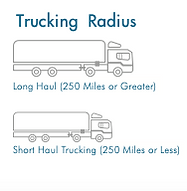
Transportation
Considering a captive insurance strategy for your transportation business can be a significant decision. Captive insurance offers potential benefits in terms of cost control, tailored coverage, and improved risk management. However, it also requires careful consideration and evaluation to determine if it aligns with your company's objectives and risk profile. This guide aims to provide transportation business owners with a structured approach to assessing whether a captive strategy is suitable for their needs.
1. Assess Your Risk Profile:
-
Identify and evaluate the specific risks inherent in your transportation operations, such as accidents, cargo damage, regulatory compliance, and liability exposure.
-
Consider the frequency and severity of these risks, as well as any unique challenges or vulnerabilities particular to your business.
2. Understand Traditional Insurance Options:
-
Review your current insurance policies and coverage to understand the extent to which they address your risks.
-
Evaluate the cost-effectiveness of traditional insurance premiums compared to the potential benefits of a captive strategy.
3. Evaluate Captive Feasibility:
-
Conduct a feasibility study to assess the financial viability and potential cost savings of forming a captive insurance company.
-
Consider factors such as initial capital requirements, ongoing operating expenses, and potential return on investment.
-
Consult with financial advisors, insurance professionals, and legal experts experienced in captive insurance to gain insights into the feasibility and regulatory considerations.
4. Analyze Cost-Benefit Ratio:
-
Compare the projected costs and benefits of a captive strategy against maintaining traditional insurance coverage.
-
Factor in potential savings from reduced premiums, improved risk management, and investment income generated by the captive.
-
Consider the long-term implications and scalability of a captive strategy relative to your business growth and risk exposure.
5. Consider Regulatory and Compliance Requirements:
-
Understand the regulatory framework governing captive insurance in your jurisdiction, including licensing, capitalization, and reporting obligations.
-
Ensure compliance with regulatory requirements and assess the administrative burden associated with managing a captive.
6. Assess Risk Management Capabilities:
-
Evaluate your organization's risk management practices and capabilities to determine if you have the expertise and resources to effectively manage a captive insurance company.
-
Consider partnering with third-party service providers or leveraging industry expertise to supplement your risk management capabilities.
7. Determine Strategic Alignment:
-
Evaluate whether a captive strategy aligns with your company's long-term strategic objectives and risk tolerance.
-
Consider how captive insurance fits within your overall risk management framework and corporate governance structure.
8. Seek Professional Advice:
-
Consult with insurance advisors, risk management consultants, and legal experts specializing in captive insurance to gain a comprehensive understanding of the implications and considerations.
-
Leverage their expertise to assess the suitability of a captive strategy for your transportation business and navigate the complexities of implementation.
Conclusion:
Deciding whether a captive insurance strategy is right for your transportation business requires careful evaluation of your risk profile, financial considerations, regulatory requirements, and strategic alignment. By following this guide and seeking professional advice, you can make an informed decision that aligns with your company's objectives and enhances your risk management capabilities.



